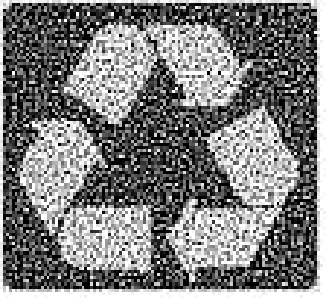|
A Visually
Significant Barcode (or Graphical Barcode) differs from the
traditional two-dimensional (2-D) barcodes such as PDF-417
in that it has the appearance of a graphical image. A PDF-417 consists of
seemingly random dots that do not resemble anything graphical.
A
Visually Significant Barcode (VSB) is a binary image which looks
like an iconic image or an acronym of a company logo. A Visually
Significant Barcode is generated by modulating the halftoning
methods according to a base image and the input bit string [1].
The bit string can be compressed, error-corrected and secured by any
typical cryptography.
An extension of the
VSB is the Image Barcode (IBC) [2]. The encoding and decoding
of information using the VSB, uses a base image with very few
graylevels (typically only two). This typically requires the image
histogram to be bi-modal. This is indeed the case for the class of
logo images or icons. For continuous-tone images such as digital
photographs, we extend the concept of a VSB to an image bar code
(IBC) that is able to render shades of gray.
For the technical details, please refer to the following
publications:
[1] D. Shaked, Z.
Baharav, A. Levy, J. Yen and N. Saw "Graphical Indicia", Proc.
IEEE International Conference on Image Processing, vol. 1, pp.
485-488, Barcelona, Spain, Sept. 14-17, 2003. (PDF)
[2] N.
Damera-Venkata and J. Yen, “Image Barcodes”, Proc. SPIE Color
Imaging VIII: Processing, Hardcopy and Applications, vol. 5008,
pp. 493--503, Santa Clara, CA January 20-24, 2003. (PDF)
Contact
For more information about the
technology, please contact Jonathan Yen (jonathan_yen@hp.com),
Doron Shaked (doron.shaked@hp.com),
or Niranjan Damera-Venkata (niranjan.damera-venkata@hp.com).
|
|

VSB example

IBC example
|
